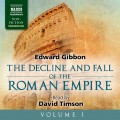The NAB Blog
Blurbs: Fact or Fiction?
By Anthony Anderson
18 October 2017
Promotional blurbs have become part of the standard marketing of not only books, but music, films and other media. However, they are fairly recent in the publishing industry. The first blurb is thought to have appeared in 1865, in the second edition of Walt Whitman’s Leaves of Grass. It contained the words from a congratulatory letter written by Ralph Waldo Emerson: ‘I greet you at the beginning of a great career.’ Endorsements from other authors form an important part of marketing to this day.
Even with this less hyperbolic approach we are still trying to entice the reader to consume our recording
Humorist Gelett Burgess’s 1907 book Are You a Bromide? featured a character by the name of Miss Belinda Blurb, who extolled its virtues with gems such as ‘when you’ve READ this masterpiece, you’ll know what a BOOK is.’
But what purpose should blurbs fulfil? Are they just marketing ‘hype’ or should they, particularly for ‘cultural’ products, give a measured and accurate summary of what is being offered. Clearly the aim is to stimulate the consumer’s interest and, ultimately, achieve a sale – so there is always a commercial objective at play.
This issue came into focus recently with the jury of the Man Booker condemning blurbs as ‘outrageous’, ‘a form of blackmail’, and ‘embarrassing’. A case was cited where a publisher had submitted the same blurb for several of the novels it submitted – purportedly along the lines of ‘the best novel since Tolstoy’. The credibility of the blurb has long been in question. As long ago as 1936 George Orwell credited the decline of the novel with ‘the disgusting tripe that is written by the blurb-reviewers’.
While the primary purpose of blurbs may be to sell products to consumers, the blurb may have been created far earlier in the life cycle. Blurbs or endorsements from other authors increasingly form part of the literary agent’s pitch to publishers, who are constantly inundated by a blizzard of manuscripts.
Novelist Gary Shteyngart has written more than 150 blurbs and has been reported as saying ‘I’ve compared people to Shakespeare, Tolstoy or whatever. I’ll do anything.’
 Recording, as we do, audiobooks of titles which have been on the market for some time, our primary objective is to inform. It’s difficult to put into words how a particular actor reads a book – and potential consumers can easily find samples of that online – so our own blurbs are mainly concerned with the book itself and its importance with, perhaps, some comment on the audiobook production. Even with this less hyperbolic approach we are still trying to entice the reader to consume our recording, but on the merits of the production itself… In short, we don’t feel that grand hyperbole is needed.
Recording, as we do, audiobooks of titles which have been on the market for some time, our primary objective is to inform. It’s difficult to put into words how a particular actor reads a book – and potential consumers can easily find samples of that online – so our own blurbs are mainly concerned with the book itself and its importance with, perhaps, some comment on the audiobook production. Even with this less hyperbolic approach we are still trying to entice the reader to consume our recording, but on the merits of the production itself… In short, we don’t feel that grand hyperbole is needed.
It is humorous to speculate on how marketing blurbs may have been written for books from the more distant past. ‘The most creative opening ever written‘ (The Old Testament), ‘The story of the greatest empire in the world – and how it was destroyed’ (Gibbon’s Decline and Fall) or ‘The most exciting travel book of the millennium’ (The Odyssey). No, on reflection, we’ll just stick to the facts.
« Previous entry • Latest Entry • The NAB Blog Archive • Next entry »